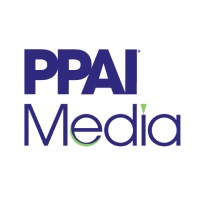After facing strong opposition, including from PPAI, during a recent public hearing, the office of the United States Trade Representative has revised its actions on the Section 301 concerning China shipbuilding with key differences from its initial February proposal. The USTR has released its final actions on the matter.
- The initial proposal had threatened fees of $1.5 million per port call for China-built ships.
- PPAI lent support to a study on the economic ramifications of the proposed actions, conducted by Trade Partnership Worldwide, and the Association also joined more than 260 trade associations in signing a coalition letter to USTR, opposing the proposed Section 301 China shipbuilding remedies.
The USTR has responded to these concerns with new criteria surrounding the actions. The fees have now been changed to apply per U.S. voyage and no more than five times per year. They also will now be based on the net tonnage of the vessel as opposed to a flat fee.
The initial proposed actions would’ve generated a massively negative impact on the promotional products industry. Distributors would’ve had to pass on the increased costs to end buyers, making branded merchandise less attractive for corporate campaigns. Suppliers would’ve faced higher production and logistics costs, reducing profit margins.
- These actions are part of the USTR’s investigation which, initially began in 2024 and has been conducted under Section 301 of the Trade Act of 1974, into China’s dominance in the global shipping sector.
- Industries relying on shipping will have to navigate these fees alongside tariffs on Chinese imports that currently sit at 145%.
“Ships and shipping are vital to American economic security and the free flow of commerce,” says Ambassador Jamieson Greer of the USTR. “The Trump administration’s actions will begin to reverse Chinese dominance, address threats to the U.S. supply chain and send a demand signal for U.S.-built ships.”
PPAI is monitoring developments closely, especially for any secondary impact on logistics, container handling or broader impacts resulting from these actions and fees.
Actions To Come In Two Phases
According to the USTR, these actions will be phased in over time in order to help businesses adjust. For the first 180 days, applicable fees will be set to zero.
The first phase of fees will begin after 180 days:
- During this period, fees will be implemented on vessel owners and operators of China, which will be based on net tonnage per U.S. voyage. These fees will increase incrementally over the following years.
- Fees will also be added to foreign-built car carrier vessels based on their capacity. The USTR claims this action is to incentivize U.S.-built car carrier vessels.
Three years following the initial phase, there will be a second phase that will place restrictions on transporting liquified natural gas (LNG) via foreign vessels. These restrictions are slated to continue to increase for 22 years.
Public Comment on Maritime Executive Order
President Donald Trump had previously signed an executive order supporting whatever the actions the USTR ultimately took to “restore America’s maritime dominance.”
Additionally, the order calls for the USTR to propose tariffs on ship-to-shore cranes manufactured or assembled using components of Chinese origin; or manufactured anywhere in the world by a company owned, controlled or substantially influenced by China.
- The tariffs would also apply to other cargo handling equipment.
Section 6 of the executive order requires the U.S. Department of Homeland Security to take all necessary action, including proposing legislation, to “prevent cargo carriers from circumventing the Harbor Maintenance Fee on imported goods through the practice of making port in Canada or Mexico and sending their cargo into the United States through land borders.”
It will require the HMF be applied to U.S. bound cargo that enters through Canadian or Mexican ports at the U.S. border, plus a “10% service fee for additional costs to U.S. Customs and Border Protection.”
- The USTR is now seeking public comment on the proposed tariffs that are included in the executive order.
- The deadline to submit a comment is May 8.
- To submit a comment concerning the ramifications of this executive order, click here.


